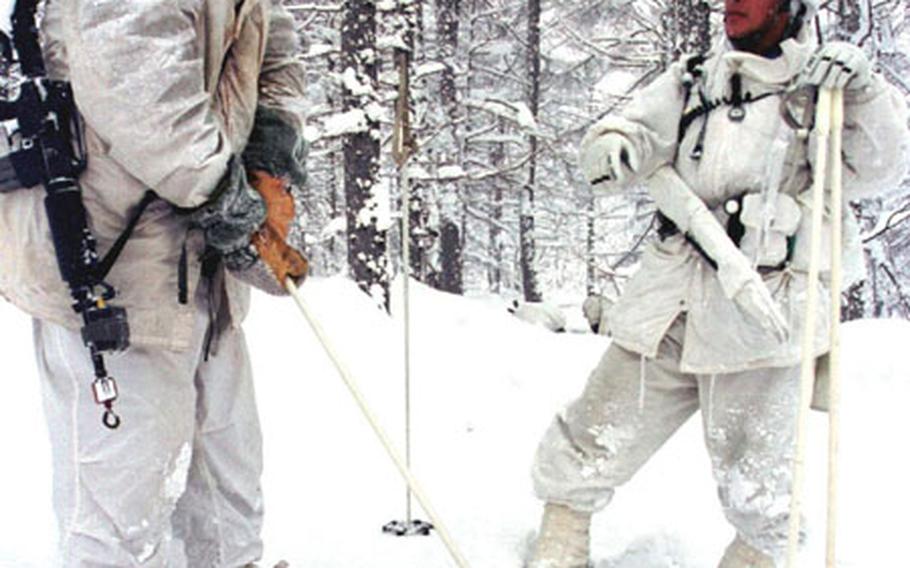
U.S. and Japanese troops, such as these who took part in North Wind 2000 field exercises, have begun North Wind bilateral exercises now under way in northern Japan. (Wayne Specht / Stars and Stripes)
About 500 soldiers from Alaska’s Fort Wainwright traded winter’s chill for — what else? — Far East winter cold, taking part in North Wind 2003 exercises that got under way Sunday in northern Japan.
Approximately 340 soldiers with the 2nd Battalion, 1st Infantry “Cold Steel” Regiment arrived at Japan’s Misawa Air Base on Friday, then boarded buses for the three-hour trip to a Japanese training site.
They will be joined by another contingent of 160 Alaska-based soldiers and about 40 support troops from Camp Zama near Tokyo.
Transportation and supply support will be handled by the Army’s 10th Area Support Group from Okinawa.
North Wind is being staged at Iwate Maneuvering Ground, a Japanese Ground Self-Defense Force training area in the shadow of 6,696-foot-tall Mount Iwate volcano, northwest of Morioka, Japan.
It is U.S. Army Japan’s premier annual cold-weather field training exercise, which runs through March 2.
Exercises involve realistic tactical planning and maneuver and live-fire training in a bilateral field setting, said Maj. Terrence Redmann, chief of field training exercises for U.S. Army Japan.
U.S. and Japanese infantry soldiers are training together in ground assaults and ski and snowshoe maneuvers.
Despite their Alaska origins, many soldiers here for North Wind will be exposed to untried field tactics for the first time, Redmann said.
The focus of the exercises is teaching soldiers to survive in the cold and honing skills to work as a group.
“They also work on planning and coordinating a bilateral operation under field conditions,” Redmann said.
Snowpack in the training areas ranges between two and three feet, Redmann said, and nighttime temperatures fall to around 10 degrees Fahrenheit.
Small-arms live-fire events include use of M-16 rifles, the M-203 grenade launcher, and 16 mm and 81 mm mortars.
“Bilateral engagement is very important,” Redmann said. “We’ll be training together the whole time from field training to social events.”
One exception to that, however, is during live-fire exercises between American and Japanese troops.
“That’s done for safety reasons because of use of different weapon systems and the language barrier,” Redmann said.
Also, according to law, there are differences in the command and control structure of both nations’ troops that require separate live-fire training scenarios.
Redmann added North Wind exercises also provide an opportunity to exchange lessons in culture through exchange programs. At the beginning and end the of each session, platoon and company level soldiers visit a host Japanese family in the area.
North Wind is among a trio of major bilateral training exercises conducted by the U.S. Army in Japan each year.
Yama Sakura, Orient Shield and North Wind exercises seek to refine key interoperability issues between the U.S. Army and the Japan Ground Self-Defense Forces.